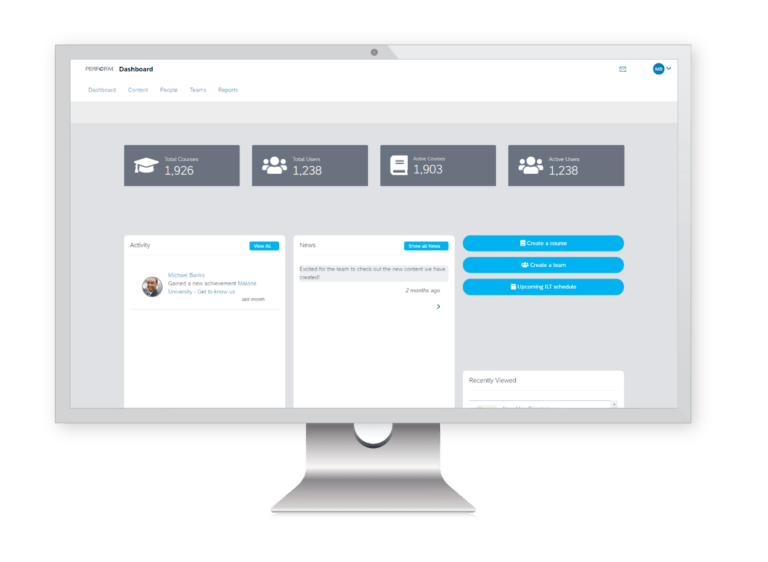The Hispanic workforce is an increasingly influential demographic in the US labor market, offering unique perspectives and work ethic due to cultural distinctions. According to the U.S. Census Bureau, as of 2022, Hispanic and Latino Americans are the largest ethnic minority in the U.S., making up 19.1% of the population. By 2050, it’s projected that nearly one in three Americans will be Hispanic.
HR and business leaders who embrace the unique characteristics of Hispanic culture and implement strategies to engage Hispanic workers will have a competitive advantage. It requires open-minded leadership and a genuine commitment to inclusivity, but the payoff is a more productive, committed, and loyal employees. It’s an investment in your workforce that aligns with the trends of our multicultural society and our evolving business landscape.
Incorporating the Uniqueness of Hispanic Culture at Work
At the core of Hispanic culture is the principle of “familismo,” which emphasizes strong familial ties and commitment to the community. This communal perspective extends beyond personal life and can influence workplace dynamics. Hispanics tend to be dedicated workers, which can translate into lower employee turnover and increased engagement. They’re also often highly collaborative, favoring teamwork over individualistic working styles, a trait that can significantly enhance productivity and cooperation.
Another characteristic is respect for authority, or “respeto,” which implies a deferential attitude toward leaders. This implies that Hispanic employees typically value clear hierarchical structures and prefer guidance from their superiors. Leaders should understand this cultural preference and engage accordingly, providing clear expectations and supportive leadership.
Also, the concept of “personalismo,” or the preference for personal connections and relationships, is prominent. Hispanic employees value sincere relationships with their colleagues and leaders, preferring face-to-face interactions over impersonal emails or messages. This affinity for personal relationships can foster a positive and inclusive work environment, enhancing employee satisfaction.
Ensuring that Hispanic employees feel valued and engaged requires you to implement these cultural nuances into company policies and everyday operations, such as:
- Celebrate Cultural Diversity: Acknowledge and celebrate the diverse backgrounds of all employees. This might mean commemorating important Hispanic holidays (Hispanic Heritage Month is September 15 – October 15), facilitating Spanish language training, or creating resource groups for Hispanic employees. These initiatives help create a sense of belonging.
- Embrace Collaboration: Leaders should encourage teams to work together on projects and provide platforms where employees can share ideas and feedback.
- Provide Clear Leadership: As Hispanic workers appreciate straightforward guidance, leaders should provide clear expectations, constructive feedback, and open communication channels.
- Promote Personal Relationships: Nurture personal connections with regular team-building activities, open-door policies, and face-to-face meetings, which can go a long way in building trust.
- Promote Representation: It’s essential to ensure Hispanic employees see themselves represented at all levels of the organization, including leadership. This boosts morale, provides role models, and inspires employees to strive for leadership roles themselves.
Dispelling Myths and Misconceptions in the Workplace
Understanding the Hispanic workforce goes beyond recognizing their strengths and unique cultural values. It also requires debunking myths and misconceptions that may inadvertently feed stereotypes.
One pervasive myth is that all Hispanics are the same, often seen as a homogenous group. In reality, “Hispanic” encompasses a multitude of nationalities, each with its unique traditions, dialects, and experiences. Mexican, Puerto Rican, Cuban, Dominican, among others, all fall under the Hispanic umbrella but possess distinct cultural identities.
Another myth surrounds language proficiency. It’s a common misconception that all Hispanics are bilingual or that Spanish is their primary language. The truth is that language proficiency varies widely among Hispanics, with many speaking only either Spanish or English, and others being fully bilingual. It is essential not to assume linguistic capabilities and instead facilitate open dialogue about language preferences and needs.
A final myth suggests that Hispanics are predominantly blue-collar workers, often associated with low-skill jobs. Hispanics contribute to all sectors of the economy, from technology and healthcare to academia and business ownership. The stereotype perpetuates a narrow view of Hispanic potential, and it’s important for businesses to recognize the diverse skills and qualifications the Hispanic workforce offers.
Overcoming Challenges Faced by Hispanic Workers
It’s crucial that HR leaders are aware of some of the biggest challenges faced by Hispanic workers and address those issues with equitable policies and practices. One of the most significant issues is the wage gap. And even though low-wage workers did experience faster-than-average wage growth during the past three years, Hispanic workers still face significant pay disparities compared to their white counterparts, despite similar educational backgrounds and work experiences (Economic Policy Institute).
To help ensure pay equity and compliance, Paycor Analytics can give leaders insights and an overview of their company compensation across various attributes including gender and minority status.

Another challenge Hispanic workers face is limited access to educational opportunities and resources. While progress has been made, there is still a gap in higher education attainment for Hispanics, often due to socio-economic barriers. Businesses can help bridge this gap by offering educational advancement opportunities, providing scholarships, and encouraging continual learning and development within the company.
Paycor’s Learning Management System can help motivate employees by giving them the chance to learn, build new skills, and become more valuable in their profession. More than ever, employees want to take control of their learning and career paths, capitalizing on development opportunities.

Lack of representation in leadership roles is also a persistent problem. Hispanics, despite being one of the largest demographics in the workforce, are often underrepresented in managerial and executive roles. This can impact morale and limit the ambition of Hispanic employees who don’t see themselves in leadership positions.
Companies need to ensure diversity at all levels, which includes fostering career growth and development opportunities for Hispanic employees. One way to get started is to check out Paycor’s COR Leadership Framework which outlines how to transform frontline managers into effective leaders.

Understanding and addressing these myths and challenges is a vital part of leveraging the potential of the Hispanic workforce. Dispelling misconceptions helps foster an environment of mutual respect and understanding, and tackling challenges shows a commitment to fairness and equality. By doing so, businesses can create a workplace where Hispanic employees thrive, bringing their unique perspectives and capabilities to the forefront.
Effective Strategies for Engaging the Hispanic Workforce
Successfully promoting engagement with Hispanic workers requires a thoughtful, comprehensive approach. It’s about acknowledging the needs of the employees while simultaneously creating an environment that feels inclusive and empowering. Here are some things to keep in mind:
- Language Sensitivity: Offering language support can make a significant difference and bridge communication gaps, whether through English language classes for non-native speakers or Spanish lessons for others.
- Mentorship Programs: Establishing mentorship programs can provide Hispanic employees with the necessary guidance and support to navigate their professional growth, helping them overcome potential barriers.
- Training and Development: Offering training opportunities and resources for professional development can help overcome educational barriers, helping Hispanic employees advance in their careers.
- Don’t Make Assumptions: Not every Hispanic employee will align with every cultural norm associated with Hispanic culture. Employees are individuals first and should be treated as such.
- Avoid Tokenism: While promoting diversity is important, it should never be reduced to tokenism. Employees should be promoted based on their skills, qualifications, and potential, not solely to meet a diversity quota.
- Language Discrimination: Never penalize or look down upon employees for whom English is a second language. Instead, encourage language learning for everyone in the organization to foster understanding and inclusivity.
- Ignoring Bias: Any form of discrimination or bias in the workplace should be promptly addressed. Implementing strict anti-discrimination policies and creating a safe channel for employees to report issues are crucial steps.
Understanding the unique dynamics of the Hispanic demographic is no longer optional; it’s an integral part of achieving success in today’s diverse business landscape. Engaging Hispanic employees revolves around respect, understanding, and a genuine effort to foster inclusivity. It’s about providing the tools and environment where every individual feels valued for their unique contributions, and where their cultural heritage is seen as a strength rather than a barrier.










